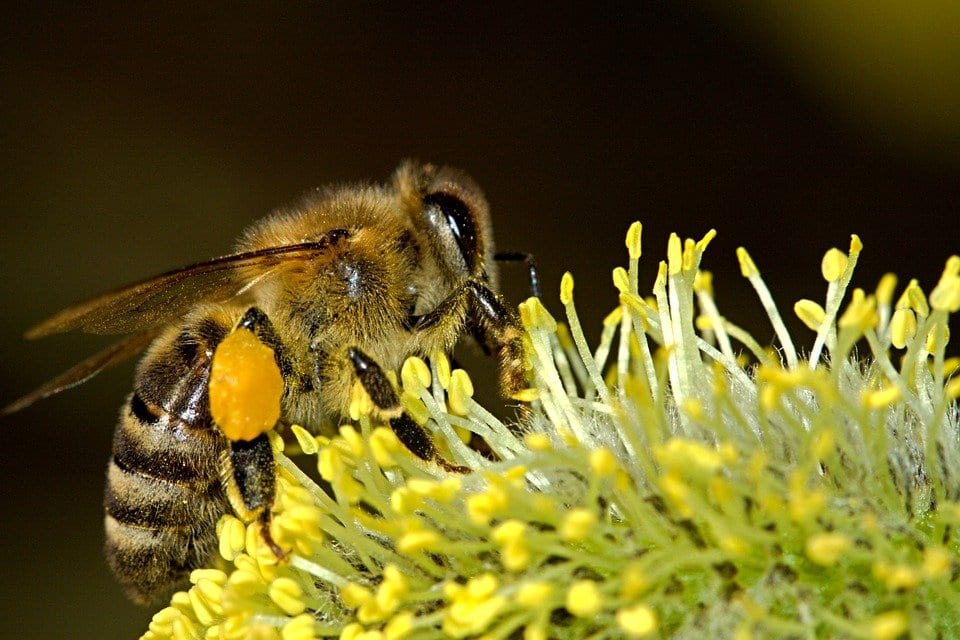
Are Robot Bees the Future?
Updated Aug 2023
Indeed, the concept of robot bees is gaining traction as a potential solution to the global decline in bee populations, which are crucial for pollination in agriculture. The research you mentioned from Japan is a significant step in this direction. The scientists successfully transformed a drone into a remote-controlled pollinator using horsehairs coated with a sticky gel.
However, it’s important to note that this technology is still in its early stages. Numerous challenges must be overcome before robot bees can be deployed in real-world scenarios. These include improving the robots’ manoeuvrability, energy efficiency, and ability to autonomously navigate complex environments autonomously, making them cost-effective for widespread use.
Moreover, while robot bees could potentially supplement natural pollinators, they are not a complete solution to the problem of declining bee populations. Efforts to protect and restore natural bee habitats, reduce pesticide use, and address other factors contributing to bee decline are still crucial.
While robot bees may be part of the future, they are not the only answer. They represent a promising area of research and development that could help mitigate the impacts of bee decline, but they should be seen as part of a broader strategy to protect our vital pollinators.
The Intricate Dance of Pollination: A Vital Threesome in Flowering Plants
The pollination process is a fascinating and intricate dance of nature, a delicate balance of mutualism where both the plant and the pollinator benefit. The plant provides the pollinator with nectar, a sweet, energy-rich substance, and in return, the pollinator transports pollen grains from the male anthers of a flower to the female stigma of another, enabling fertilization and the production of seeds.
This symbiotic relationship is not just a random occurrence but a highly evolved and specialized interaction. For instance, certain flowers have grown to attract specific pollinators. Hummingbirds are drawn to bright red, tubular flowers that can accommodate their long beaks, while bees prefer blue or yellow flowers with a sweet fragrance. Some flowers bloom at night to attract nocturnal pollinators like bats and moths.
However, this intricate dance is under threat. Habitat loss, climate change, and pesticide use are causing a decline in pollinator populations. This is a cause for concern as it disrupts the natural balance of ecosystems and threatens the production of many of our food crops. The importance of pollinators extends beyond the beauty of our gardens and landscapes; they are crucial for global food security and biodiversity. Therefore, it is essential to promote pollinator-friendly practices and conservation efforts to protect these vital players in flowering plants.
RoboBees: The Dawn of Autonomous Micro-Aerial Vehicles
The concept of RoboBees, a revolutionary innovation in robotics, was born out of the desire to create autonomous micro-aerial vehicles. These insect-inspired robots, developed by researchers at the Wyss Institute, are designed to mimic bees’ size, weight, and functionality. Measuring about half the size of a paper clip and weighing less than one-tenth of a gram, these tiny engineering marvels are capable of flight through artificial muscles. These muscles are composed of materials that contract when a voltage is applied, enabling the RoboBees to take flight.
The potential applications of RoboBees are vast and varied. They could play a crucial role in agriculture, particularly in crop pollination, traditionally performed by natural bees. With the decline in bee populations, RoboBees could provide a much-needed solution. Beyond agriculture, these micro-robots could also be deployed in search and rescue missions, providing an agile and efficient means of locating survivors in disaster-stricken areas. Surveillance, high-resolution weather, climate, and environmental monitoring are other potential applications, making RoboBees a versatile tool for a range of industries.
The Evolution of RoboBees: From Flight to Aquatic Functionality
In their quest for continuous innovation, the researchers have equipped some models of RoboBees with the ability to transition from flying to swimming underwater. This added functionality broadens their potential use in aquatic search and rescue missions or underwater exploration. Furthermore, these advanced models can perch on surfaces using static electricity, conserving energy while not in flight.
The development of RoboBees is broadly divided into three main components: the Body, Brain, and Colony. The Body involves the construction of robotic insects capable of autonomous flight powered by a compact and seamlessly integrated power source. The Brain encompasses the development of intelligent sensors and control electronics that mimic the eyes and antennae of a bee, enabling the RoboBees to sense and dynamically respond to their environment. The Colony aspect focuses on coordinating the behaviour of many independent robots, allowing them to act as a cohesive unit, much like an actual bee colony. This tripartite approach to development ensures that each RoboBee is a self-contained, self-directed unit capable of achieving coordinated behaviour in large groups. Harvard
In the Serene Fields of Capay Valley: A Blossoming Symphony
Near Esparto, amidst the picturesque Capay Valley in central California, 1,400 young almond trees thrive in a century-old orchard, gracefully overlooking the rolling hills. Since November, they have stood in impeccable rows, bare and dormant branches awaiting the approaching growing season. Today, their boughs swell with delicate pastel blooms, a prelude to the essential act of pollination.
Brian Paddock, the steward of Capay Hills Orchard, shares the sentiment of countless almond growers: “No bees, no almonds. It’s as simple as that.”
Often perceived as bothersome creatures, these tiny beings with formidable stingers play a pivotal role in agriculture, facilitating the pollination of various crops. Their absence would spell doom for numerous fruits and vegetables. It’s an agricultural catastrophe that deeply concerns Paddock.
The sad truth is that bee populations have been dwindling, with losses surpassing their capacity for regeneration. Last year, the United States witnessed a staggering 44 per cent decline in honeybee colonies, a species vital to commercial pollination nationwide. NPR
Autonomous Robot Bees: Walmart’s Surprising Foray into Farming Technology
Walmart, the retail giant, has recently made a notable move by filing a patent for autonomous robot bees, also called “pollination drones.” Yes, you read that correctly. It’s Walmart, and no, you haven’t entered an alternate, stranger dimension. This patent outlines the development of small robotic drones designed to mimic the pollination behaviour of bees, operating autonomously.
These robot bees would rely on sensors and cameras to navigate to crops. By flying autonomously, these drones have the potential to perform pollination tasks with a level of effectiveness comparable to natural pollinators.
Interestingly, this isn’t the only farming-related patent Walmart has pursued recently. Reports from CB Insights reveal that Walmart has filed six patents related to farming drones. These drones are envisioned to monitor crop damage, apply pesticides, and more. Integrating autonomous robots into farming practices holds the promise of cost reduction and increased agricultural efficiency.
The intriguing question remains: Why is Walmart delving into this field? The retailer has not publicly commented on these patents, leaving the reasons behind their sudden interest in farming drones open to interpretation. Futurism
Other Stories of Interest
One chart illustrates economic recovery 100% fiction
Strategies for Dealing with Stock Market Losses
Bond Market Today: Fed raised rates & bonds Rallied As Predicted
Sweden Rape News: Police cover up sex crimes
Unapproved Pharmaceutical Ingredients In Dietary Supplements
Market Update Tactical Investor Past Calls: The Trend Is Your Friend
China Corruption: Fast & Furious crackdown
Crude oil price projections: will oil prices stabilize
For Many Americans Great Recession Never Ended
Belt & Road Initiative: Taking China’s culture beyond borders
China cuts rates to boost green energy demand

China showcases its culture to the World
Remaking Moscow lures more Chinese investment
Chinese firms extend Moscow’s rail networks
Russians show patriotism on nuclear bunker tours


